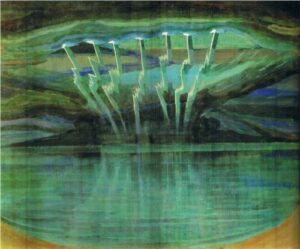Here we have a healing spell (that also allows stealing youth), a method of speaking with the dead inspired by Book 11 of the Odyssey, and a way for sorcerers to collect souls.
Also, Wonder & Wickedness now has a full complement of 8 spells per category, for 56 in total.
Life Channel
The sorcerer transfers life energy (either youth or vigor) from one creature to another by touch (a saving throw per turn is provided for the non-consensual, though a successful save does not end the spell). If youth is transferred, the source ages one die worth of years per turn and the recipient regains one year of youth. If vigor is transferred, the source takes one die of damage (though only one point of damage is sustained if the source is the sorcerer, with no possibility of corruption) and the recipient 1) regains six hit points but is permanently changed somehow by the dark magic (such as a dim translucency of skin, an aversion by animals, or an emanation that causes small fires nearby to extinguish), 2-5) regains the number rolled worth of hit points, or 6) regains six plus another die worth of hit points.
Occult Consultation
The sorcerer must dig a pit two feet square, into which is poured wine, fragrant herbs, and the blood of a sacrifice slain with a bronze knife. A throng of ghosts is summoned by this ritual, which may be conversed with as desired for the duration of the spell, though truth is not compelled (specific ghosts may be called if the sorcerer has material remains, a possession that was once treasured by the deceased, or a true name). Following the consultation, if desired, the sorcerer may follow the ghosts in katabasis to the land of the dead (along with any number of willing companions), though an easy path of return is not guaranteed.
Soul Harvest
By the casting of this spell a sorcerer traps a disembodied soul (of HD less than or equal to the sorcerer’s level) within an unoccupied clay jar or flask which has been previously prepared (these vessels are significant for purposes of encumbrance). Souls on their way to the underworld or other final reward may be captured automatically, but free-willed souls (such as incorporeal undead) are permitted a saving throw. A soul may be freed in exchange for a favor from the ghost (standard negotiation procedures apply), traded as sorcerous currency, or consumed for temporary power (such as a bonus to a single roll or a die worth of temporary hit points).

Corot – Orpheus Leading Eurydice (source)








